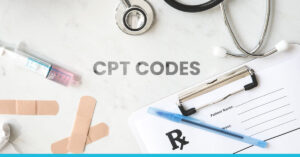
While doctors, nurses, and other medical professionals are at the forefront of patient care, numerous people behind the scenes work to ensure the best quality of service provided. Two such people are medical coders and medical transcriptionists, responsible for practicing two very distinct fields.
Medical coding and medical transcription pertain to unique aspects of the hospital, the former related to billing and the latter to the maintenance of patient health records. While they might sound similar and overlap in certain ways, this article will debunk any misconceptions you might have regarding medical transcription meaning and importance.
What is medical coding?
Before finding out what medical transcription is, let us understand medical coding. Medical coding is the practice of assigning alphanumeric codes to each type of illness, injury, medical procedure, diagnosis, medical visit, equipment sold, and service provided, in compliance with a set standard that is nationally recognized. This is done for billing and financial settlement in the form of insurance reimbursement.
These industry-standard coding transcripts follow guidelines such as CPT, HCPCS, and most commonly, ICD-10, so the process of claims submission is simplified and standardized. These codes are recognized by insurance agencies, who would otherwise not understand medical jargon and procedures conducted. When a code is assigned to each procedure, the coding transcript shows what service needs to be billed.
Medical coding involves access to patient health records, physician’s notes, case summaries, discharge reports, billing information from the hospital database, and other such documents to be interpreted and analyzed for assigning codes. To understand them effectively, medical coders must be aware of medical terminologies and abbreviations for accurate billing.
Like learning a new language, medical coders are well-versed with the combinations of letters and numbers needed to communicate information. They are usually great with computers, memorizing intricate codes, and working with people to handle the medical staff, patients, and insurance firms.
In simpler terms, medical coding bridges the gap between a physician’s reports (case summaries, discharge summaries, etc.) and the insurance providers untrained in the medical field.
Since medical coders are responsible for submitting claims, they might need to work in conjunction with the legal department and insurance firms to verify the said claims and filter out any instances of fraud.

What is medical transcription?
While medical coding uses patient records, medical transcription ensures the upkeep of those records in the first place. Most hospitals have now transitioned to electronic health records from the conventional and ineffective paper filing system, and that number has only gone up in a post COVID world.
Comprehensive documentation needs to be maintained, but doctors, nurses, and other healthcare professionals do not have the time to burden themselves with enormous heaps of paperwork. That is where medical transcription comes in. It is the manual processing of voice reports into a digital record.
What does that mean?
Instead of writing patient summaries and case notes, physicians dictate that to a portable dictation device that stores voice recordings. These may include case notes, lecture content, medical records, treatment plans, surgery notes, or any other information, then forwarded to a medical transcriber to be converted into a written format. Medical transcription is responsible for generating all text reports such as patient charts, patients’ electronic health records, and discharge summaries.
They don’t always have access to dictations. It could be voice recordings of patient and doctor consultations or a direct dictation from a medical professional to a transcriber instead of through a portable device.
Contrary to public perception and unlike medical coding, the meaning of medical transcription has nothing to do with billing.
Medical transcribers aren’t always responsible for crafting reports from scratch. They have access to physicians’ brief notes that they need to elaborate into a long-form to be understood by any non-medical personnel. Or their responsibility might be to proofread and look for inaccuracies in drafts generated by speech recognition software.
Since the entire job revolves around listening, medical transcription requires excellent active listening skills, strong grammar, typing, writing skills, and a fair judgment on what needs to be incorporated into a report and what can be omitted.
In addition to that, medical transcribers must be capable of interpreting medical terminology, abbreviations, physicians’ handwriting, and pharmaceutical terminology to pen it down in the patients’ records accurately.
Since it is a job that can be done at its own pace and is largely independent, medical transcription can be outsourced to external agencies with transcribers that have experience writing healthcare reports. Similarly, it is also possible to get this work done remotely.

The future of medical coding and medical transcription
While each medical practice has a coding department, medical transcription is much more specialized to be as common. Most healthcare facilities do not require full-time transcribers, which is why they usually outsource it to a third-party agency or a self-employed transcriber.
This is done to save costs. Hospitals without a full-time transcriber usually do not, so that job falls back upon physicians and other medical professionals responsible for documenting everything. However, as established, that has a high opportunity cost for the quality of patient care they can provide because of the reduction in the available time.
Hospitals will always need someone to generate coding transcripts because they cannot bill patients without those. Besides that, medical transcription is also much harder to get into. Since it is a more specialized field, anyone willing to go into it needs to have at least an undergraduate degree.
This is unlike medical coding, where all you need is a diploma or a certification that can be done anytime, making it much easier to pursue than medical transcription.
This lowered demand and increased resistance to entry in medical transcription are why the number of medical transcribers is projected to decrease in the coming years (the opposite being true for medical coding). Still, with the world having turned digital with the COVID-19 pandemic, one can only wait to find out what the future of medical transcription entails.
See Also: What Is A Patient Care Technician Or PCT?
The bottom line
Although very different, medical transcription and medical billing are crucial to the survival and success of a healthcare practice. Neither of these fields can afford mistakes, as that might hamper patient care by either affecting billing or medical histories. Anyone going into either of them must be organized, detail-oriented, with a penchant for learning medical terminology.
Both being important in their regard, they work collectively to ensure that healthcare professionals have all the time they need to cater to their patients. Understanding what medical transcription is, is the first step towards optimizing your medical practice, the second being trying a transcriber out as soon as possible.







No comment yet, add your voice below!